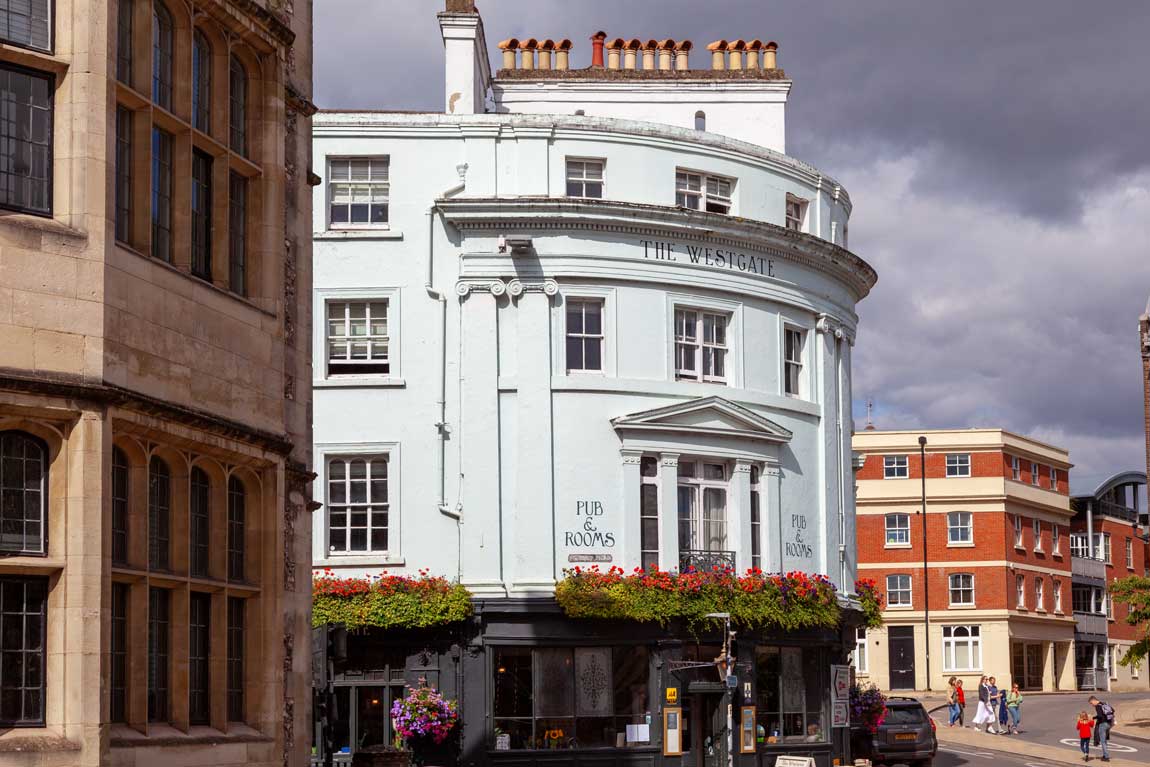Winchester is an historic town. Prior to the Romans, it had been the centre of the British Belgae tribe and was known to Celtic Britons as "Venta".
Following the Roman invasion it served as the capital of the Belgae and became known as "Venta Belgarum".
By the beginning of the third century it was one of the largest settlements in Britain but it began to decline with the end of the Roman Empire. Thereafter it eventually became known as "Wintanceaster" (meaning "Fort Venta" in Old English).
Anglo Saxon England didn't really have a fixed capital although Winchester and London were both important in King Alfred the Great's administration.
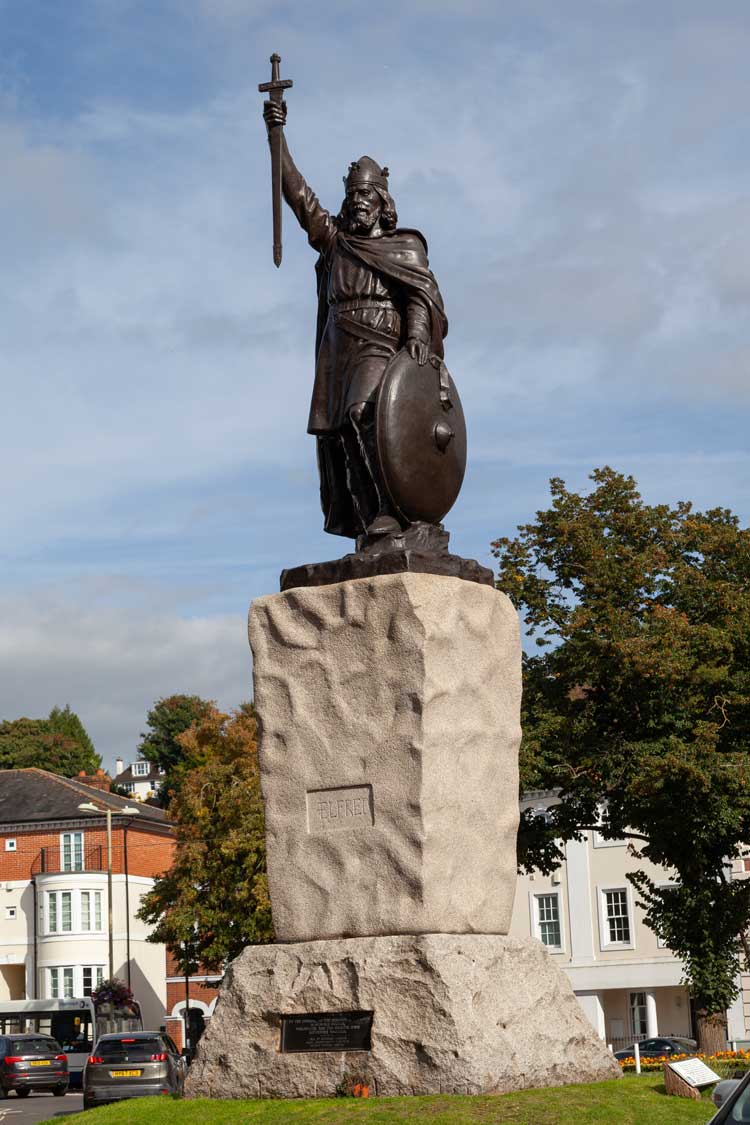
This is the well-known statue of King Alfred the Great who ruled the Anglo Saxon kingdom of Wessex from 871AD until his death in 899AD. At the time of his enthronement, the Vikings had taken control of half of what is now the country of England and were threatening Wessex. Alfred's armies were not successful at first but eventually won a great battle at Edington in 878AD. The battle resulted in the conversion of the Viking King, Guthrum, to Christianity.
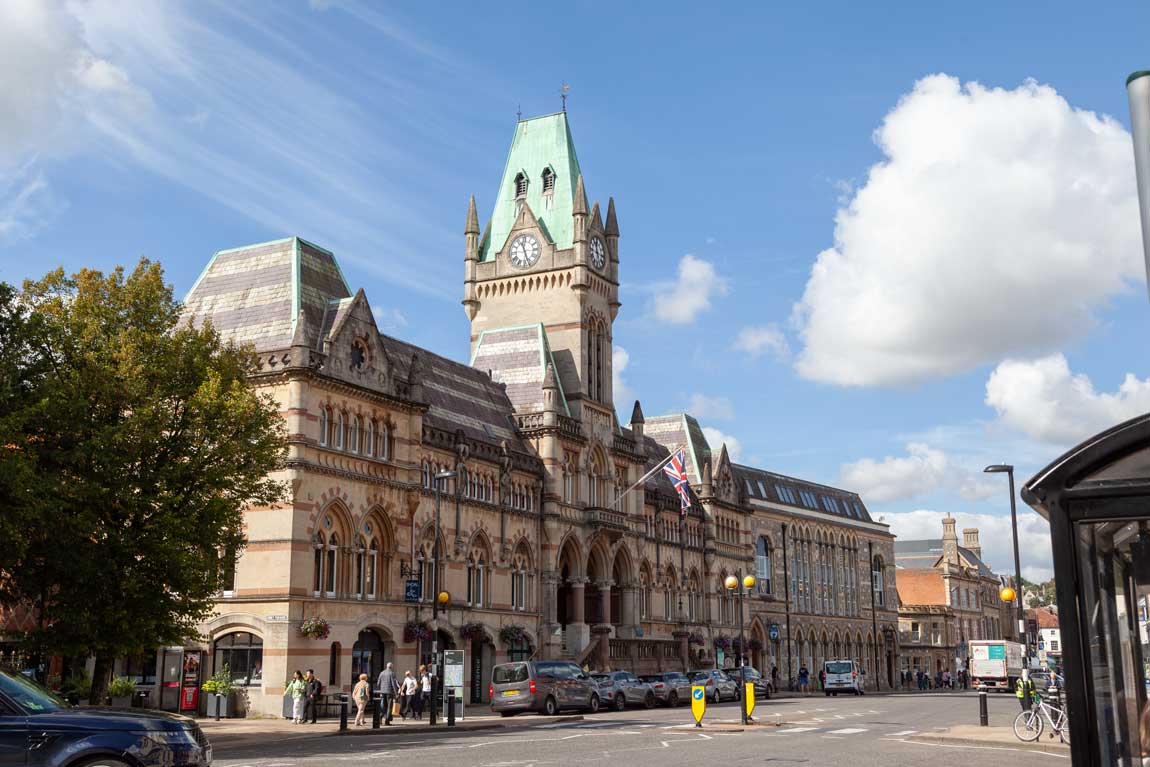
This is the Guildhall. Although it looks older, it wasn't constructed until 1873.
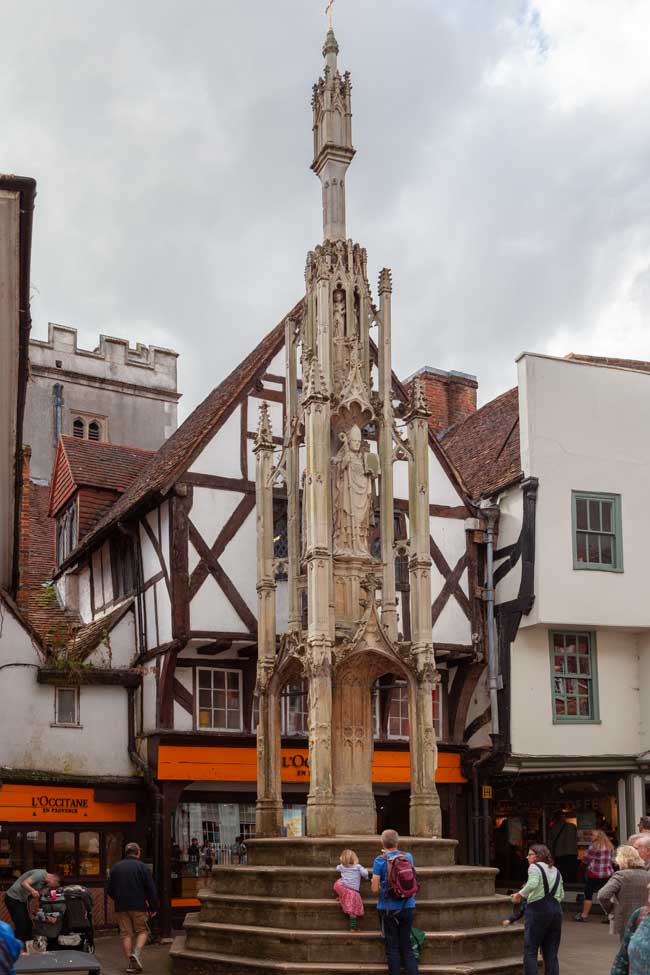
This is the Buttercross on High Street. It has been at this location since at least the early 15th century.

The City Museum
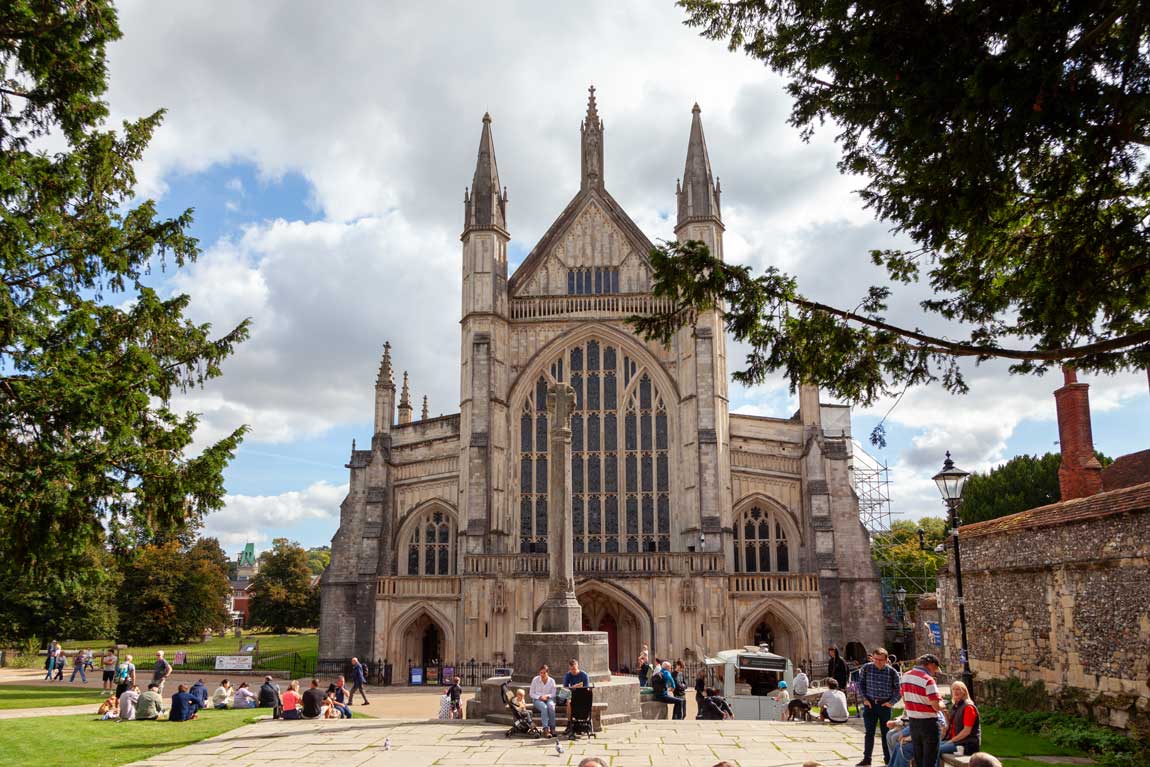
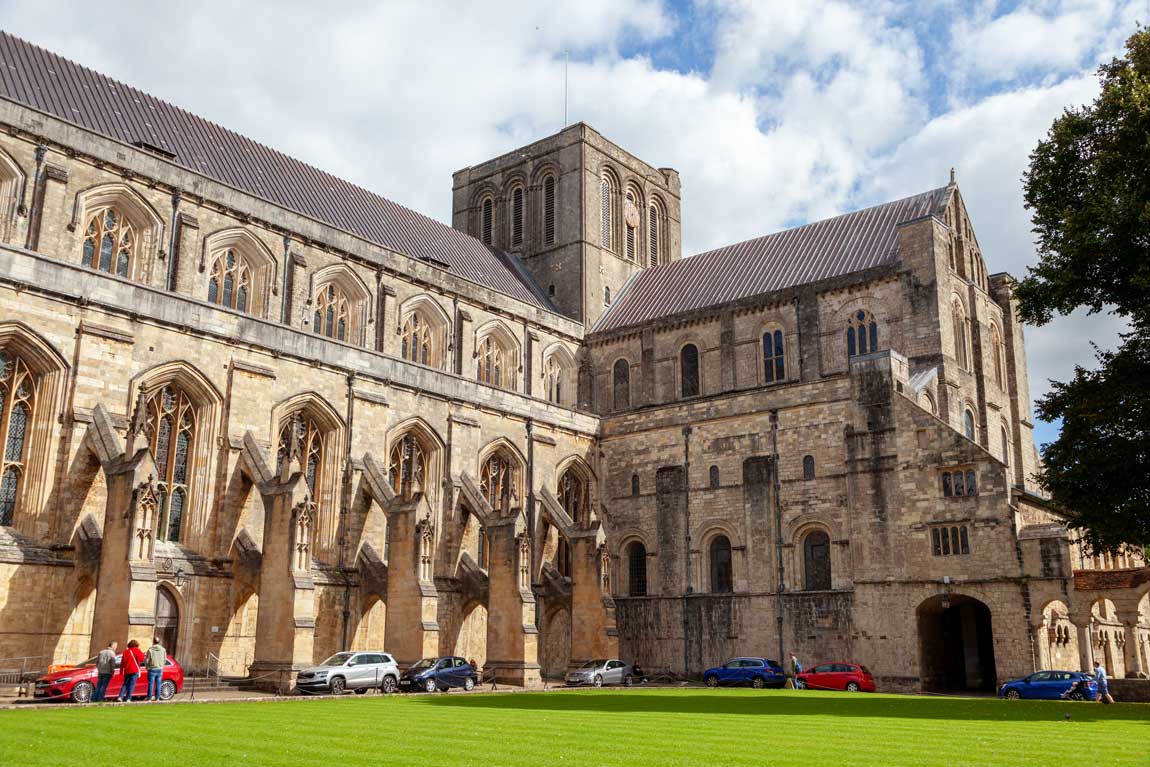
The Cathedral
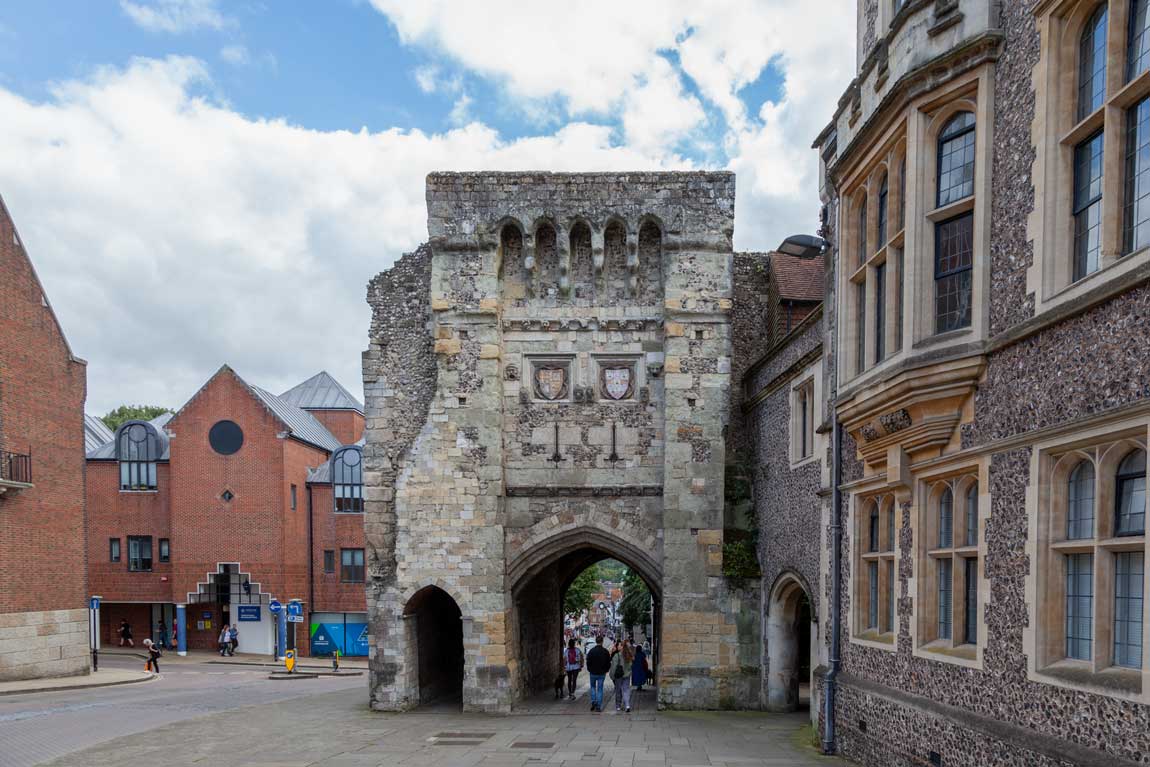
The West Gate (depicted above) and the Great Hall (see below - the building at the end of the street) are the only surviving parts of Winchester Castle.
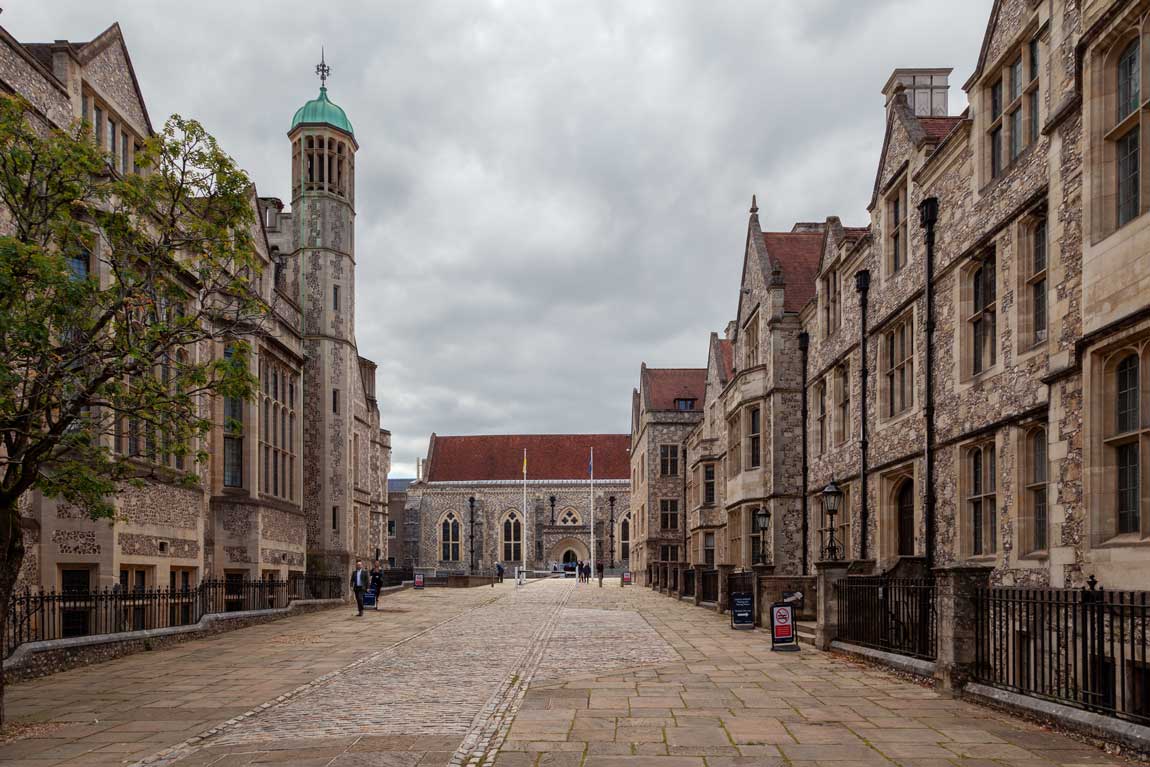

Inside the Great Hall is the supposed Round Table of King Arthur.
